Special Report
20 Times in History the World Could Have Ended
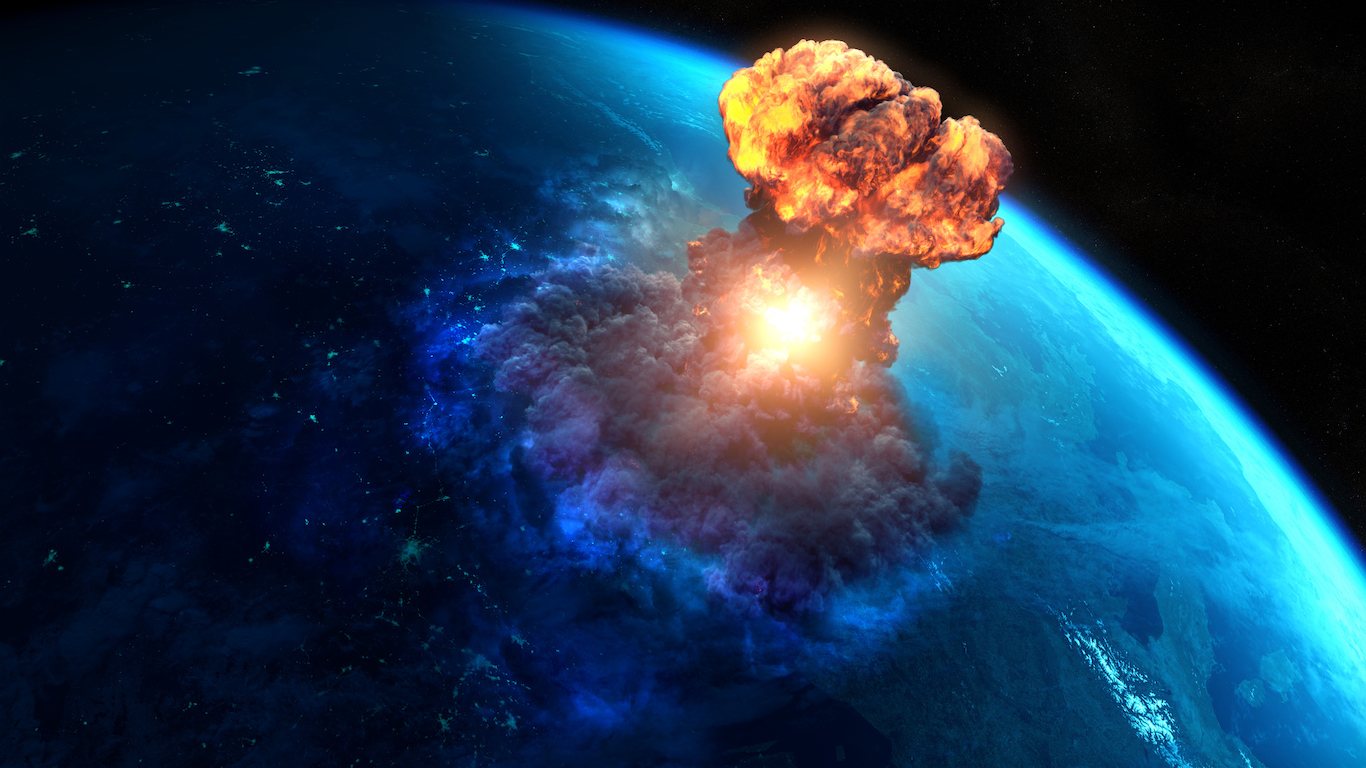
Published:
Last Updated:

How close has the world come to meeting its end? Very close, and more times than you think. We know from geologists, paleontologists, and archaeologists that the planet was slammed by asteroids millions of years ago, and the impact virtually wiped out life on Earth. And this was long before humans were on the scene.
Since the ascent of mankind, humans have staved off possible extinction from massive volcanic eruptions, floods, and ice age glaciers.
More recently, many of the threats to our planet have originated with ourselves. Since the end of World War II, we have lived with the Damocles sword of nuclear annihilation, and we have come close to that fiery demise more than a few times because of miscalculation, computer malfunction, and human error.
We are not free from unwelcome visitors from the cosmos, either. Solar flares, asteroids, and comets have threatened our existence in the past and continue to do so.
With a nod toward our mortality, 24/7 Wall St. has compiled a list of the ways the world could have ended, using resource material such as Live Science, NASA, National Geographic, and Scientific American.
Click here to see the ways the world could have ended.

20. Permian era extinction
> When: 250 million years ago
It was called by National Geographic the greatest natural disaster in Earth’s history. About 250 million years ago, at the end of the Permian period, almost all of Earth’s trees were wiped out, as well as 95% of all marine animal species, and more than two-thirds of land animal species.
There are various theories as to why this event happened, including impact from an asteroid, fallout from a titanic volcanic eruption, depletion of oxygen in the oceans, and massive buildup of carbon dioxide.
[in-text-ad]
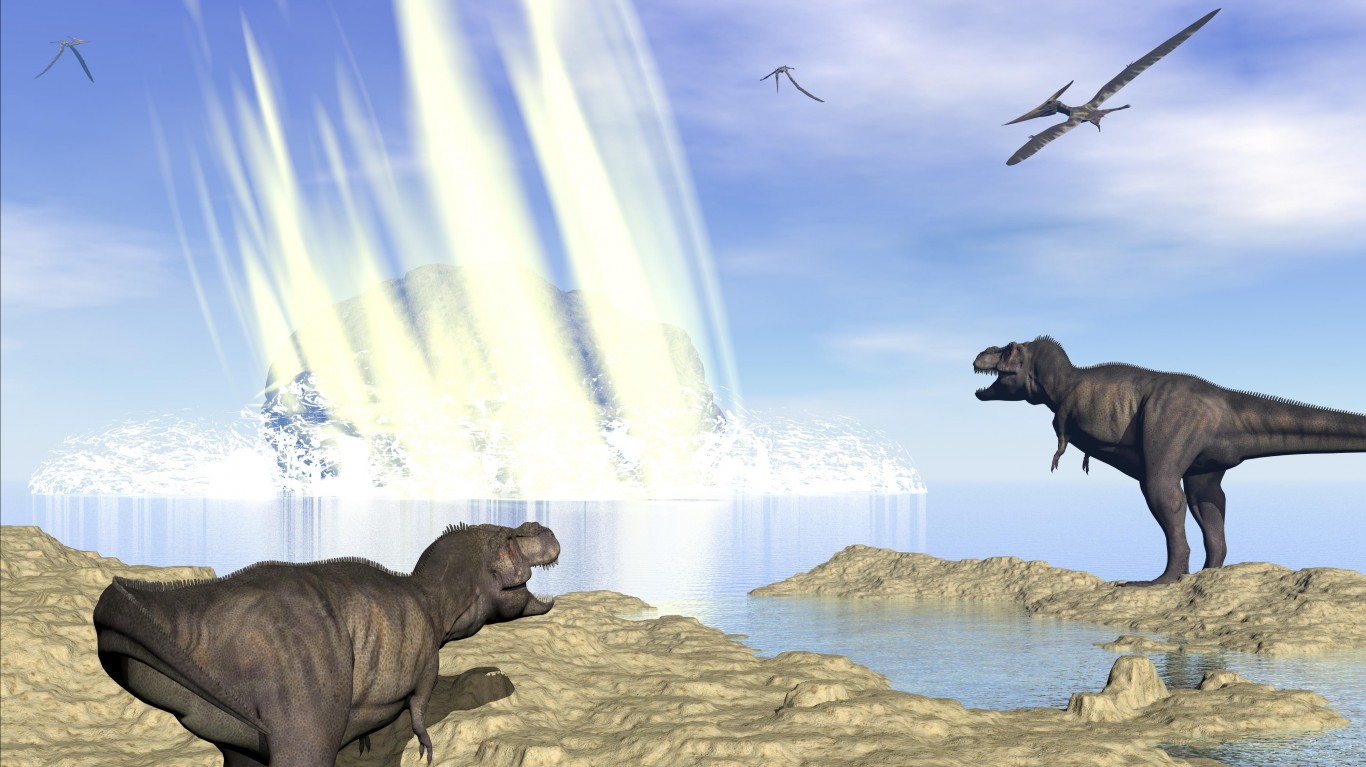
19. Chicxulub impact
> When: 66 million years ago
The Chicxulub impact is one of the most thoroughly researched, and catastrophic, natural disaster events in Earth’s history. During the Mesozoic era 66 million years ago, an asteroid traveling 40,000 miles an hour struck the Yucatán Peninsula in what is now Mexico with a force estimated to be more than 100 trillion tons of TNT.
It created a crater 115 miles wide and several miles deep. Scientists believe creatures hundreds of miles away were killed by a giant fireball. The force of the blast created a tsunami scientists believe was up to 1,000 feet high.

18. Marine Isotope Stage 6 glacial event
> When: 123,000-195,000 years ago
Marine Isotope Stage 6 is the rather clinical-sounding name for the long glacial event that nearly wiped out homo sapiens between 195,000 and 123,000 years ago. Scientists believe rapid climate change leading to cold, dry climate conditions made the African homeland of our descendants uninhabitable.
They migrated toward the southern coast of Africa to escape disaster because that region had edible plants and a profusion of shellfish.
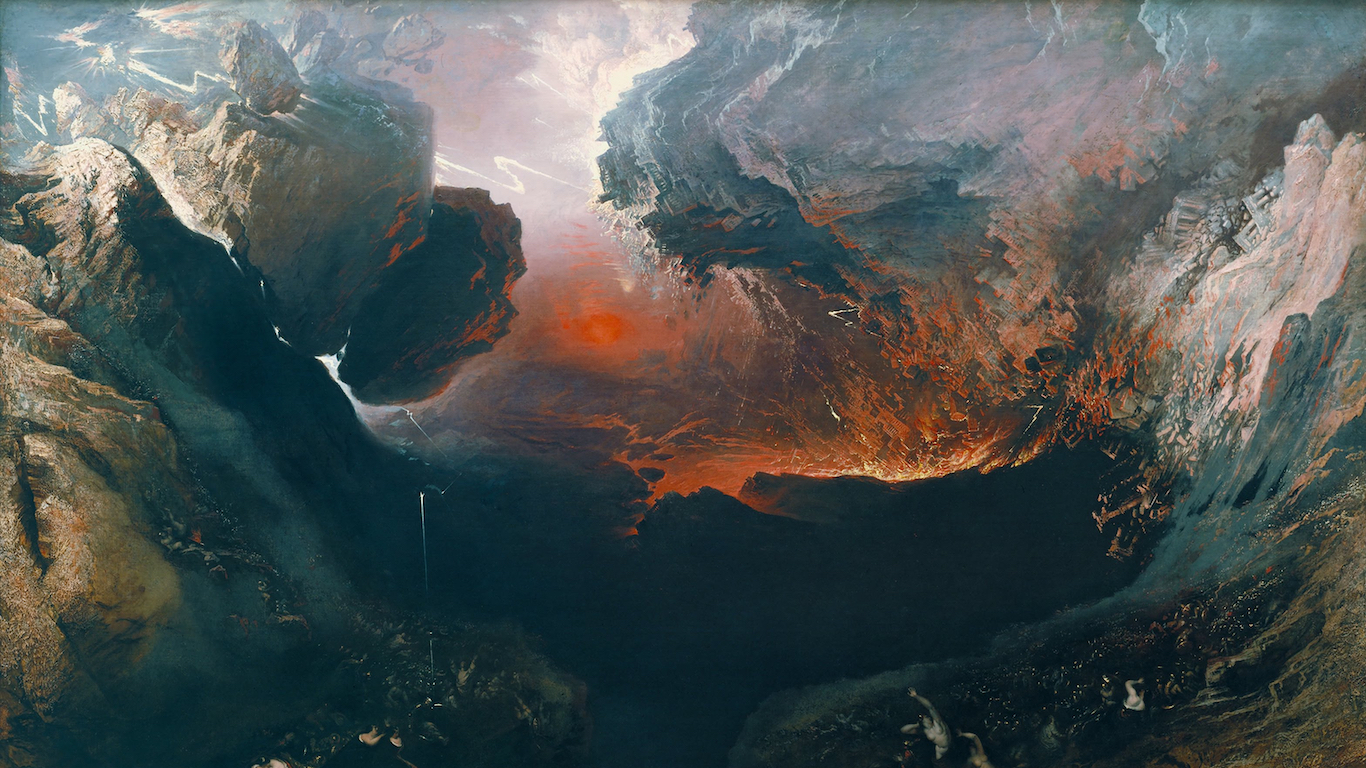
17. Eruption of Mount Thera
> When: 1645-1500 BC
The eruption of Mount Thera in Greece about 3,500 years ago was four to five times more powerful than the more widely known Krakatoa event in 1883. Geologists believe the energy emitted from the blast was that of hundreds of atomic bombs exploding in a fraction of a second. The blast could be heard 3,000 miles away.
The Minoan culture that held sway over the Mediterranean region at the time disintegrated. Earth was covered with enough ash to bring on darkness all over the world. Tsunamis raced around the planet and wiped out untold numbers of coastal villages, just as civilization was dawning.
[in-text-ad-2]
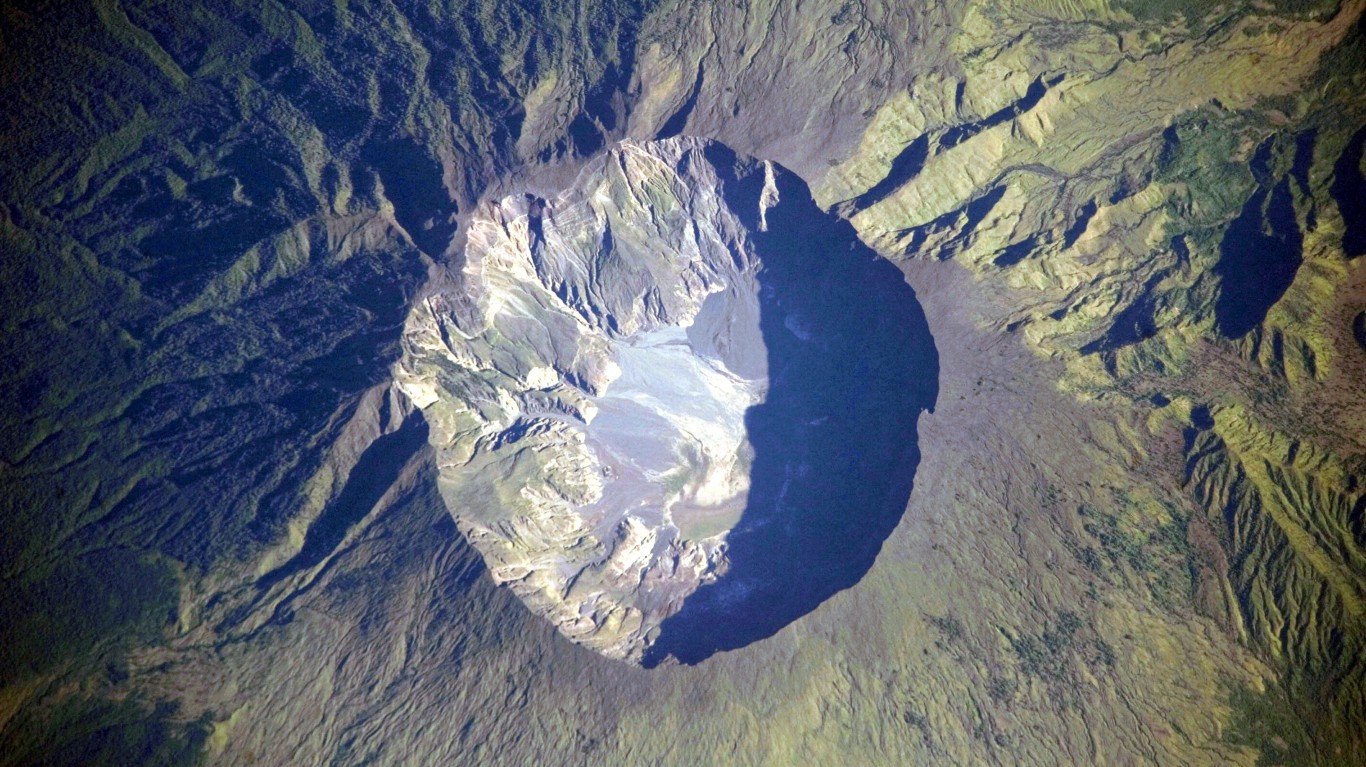
16. Eruption of Mount Tambora
> When: 1815
Another volcanic episode that predates Krakatoa was the eruption of the Indonesian volcano Mount Tambora in 1815. The next year became known as “The Year Without a Summer” following what scientists said was the biggest volcanic eruption in history. About 71,000 people perished.
The resulting “volcanic winter” — when debris spewed into the atmosphere from the volcanic event blocked ultraviolet rays from the sun and lowered Earth’s temperature — killed livestock and crops all around the world.
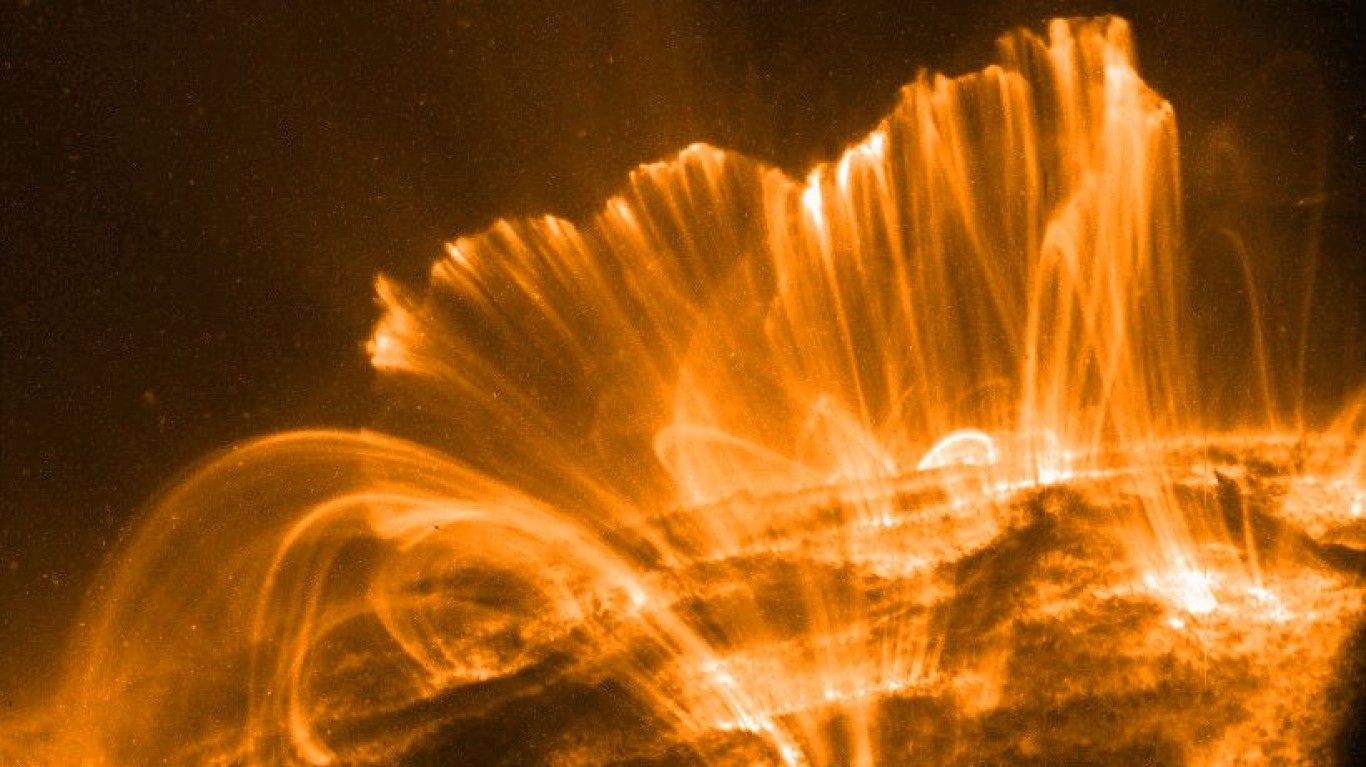
15. The Carrington Event
> When: 1859
Had electricity been in widespread use in 1859, the solar storm that struck Earth that year would have been a truly catastrophic event. The event was named after British astronomer Richard Carrington, who witnessed it and was the first to understand the connection between the sun’s activity and geomagnetic disturbances on Earth. As it was, the cosmic episode damaged telegraph communications all over the world.
The solar flare was so intense that people in countries where nighttime had fallen thought it was morning.
[in-text-ad]
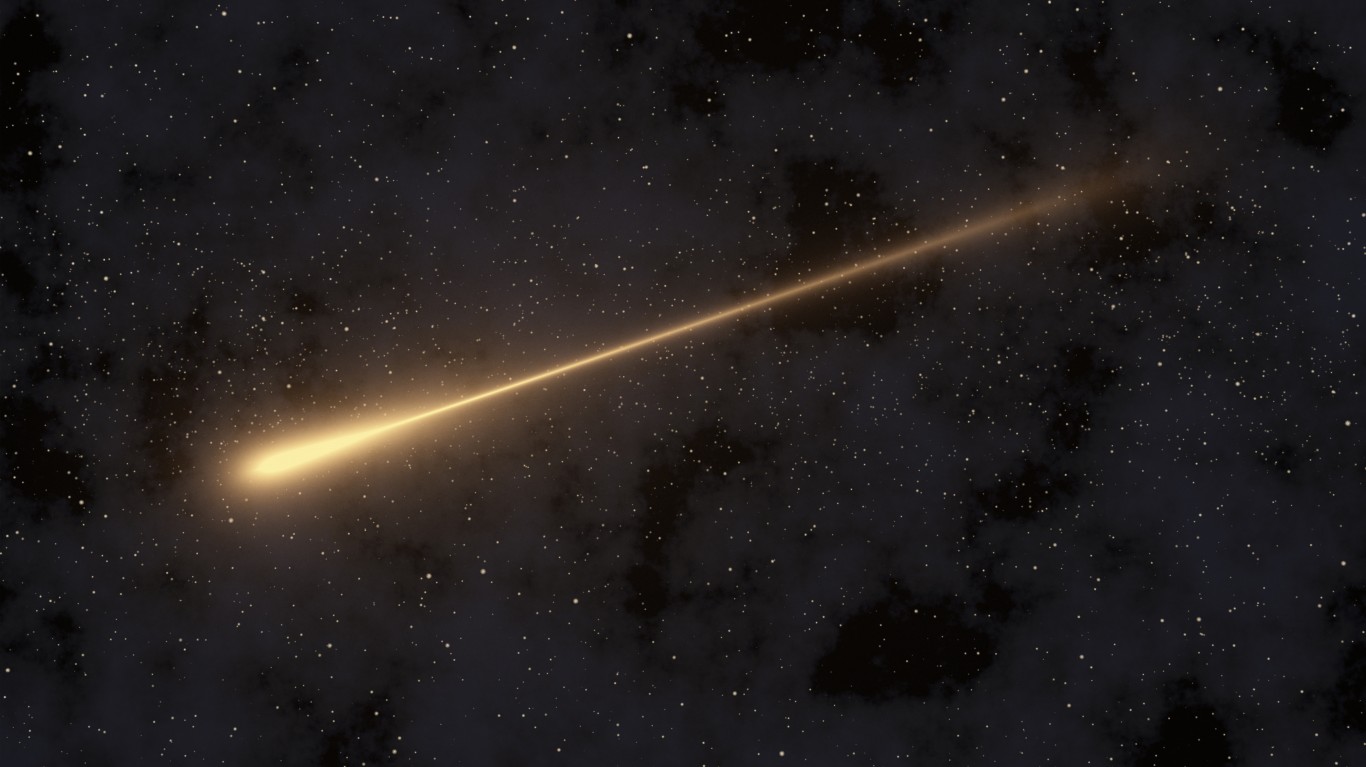
14. Bonilla Comet
> When: 1883
In the same year Krakatoa erupted in the Pacific, Earth was nearly visited by the Bonilla Comet, and it would have been calamitous if it had. In 1883, portions of the comet, named after astronomer José Bonilla, missed Earth by just 400 miles. Had they not missed Earth, they likely would have caused hundreds of thousands of deaths.
Scientists estimate fragments might have ranged in size from 164 feet to about 3,280 feet across. Each chunk was estimated to be as big as the fragment that hit Tunguska in Russia in 1908.

13. The Windscale fire
> When: 1957
Windscale was a plutonium plant used to make nuclear weapons in the Cumbria region of England, and a fire there in 1957 nearly resulted in the worst nuclear accident in Western Europe. On Oct. 10, 1957, a young physicist named Vic Goodwin working at Windscale noticed elevated levels of radioactivity in one of the facility’s cooling chimneys and helped avert disaster. The fuel channels overheated and caught fire. Workers struggled to put out the fire until makeshift hoses were used to douse the blaze.
The fallout that escaped the facility was detected in Belgium, Germany, and Norway and was blamed for about 200 cancers in Britain.

12. False nuclear war alarm
> When: 1961
On Nov. 24, 1961, communication between Strategic Air Command headquarters and three ballistic missile early warning sites went dead. The Air Force thought the Soviet Union had knocked out all of America’s radar detection sites. While pondering a possible attack, the United States readied B-52 bombers for takeoff. The attack was called off when it was discovered that communications had been cut off because of an overheated motor.
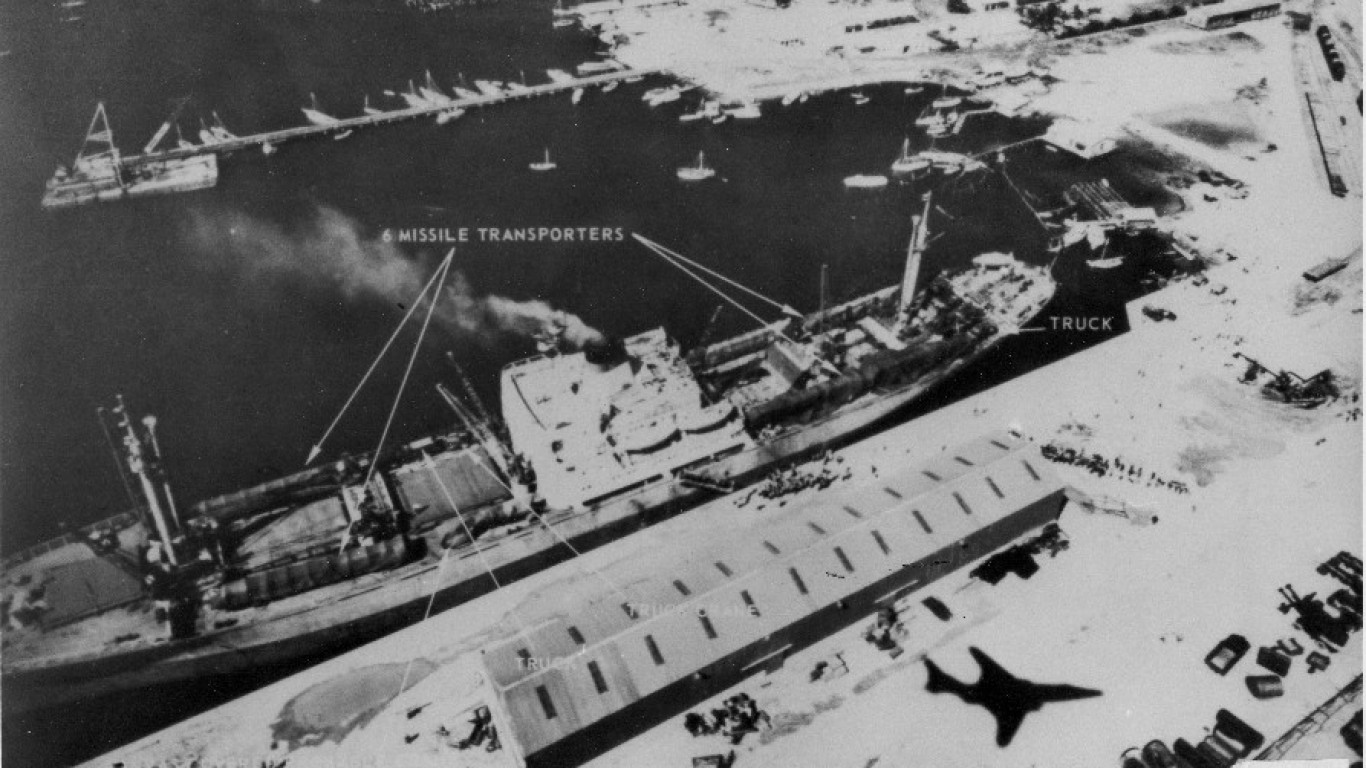
11. Cuban Missile Crisis
> When: 1962
The world was on a razor’s edge in October 1962, after the United States discovered the Soviet Union had placed nuclear missiles on Cuba, 90 miles from the U.S. border. Until the crisis was resolved, several times the world came close to nuclear annihilation. One such time occurred on Oct. 25, 1962. That evening, a guard at the U.S. military base in Duluth, Minnesota, saw a figure climbing a security fence. The guard sounded a “sabotage alarm” that triggered a “launch nuclear missiles” alert at Volk Field, Wisconsin, which ordered F-106A interceptor planes to take off.
The planes were halted before takeoff, when it was discovered that the intruder in Duluth was a bear.
[in-text-ad-2]
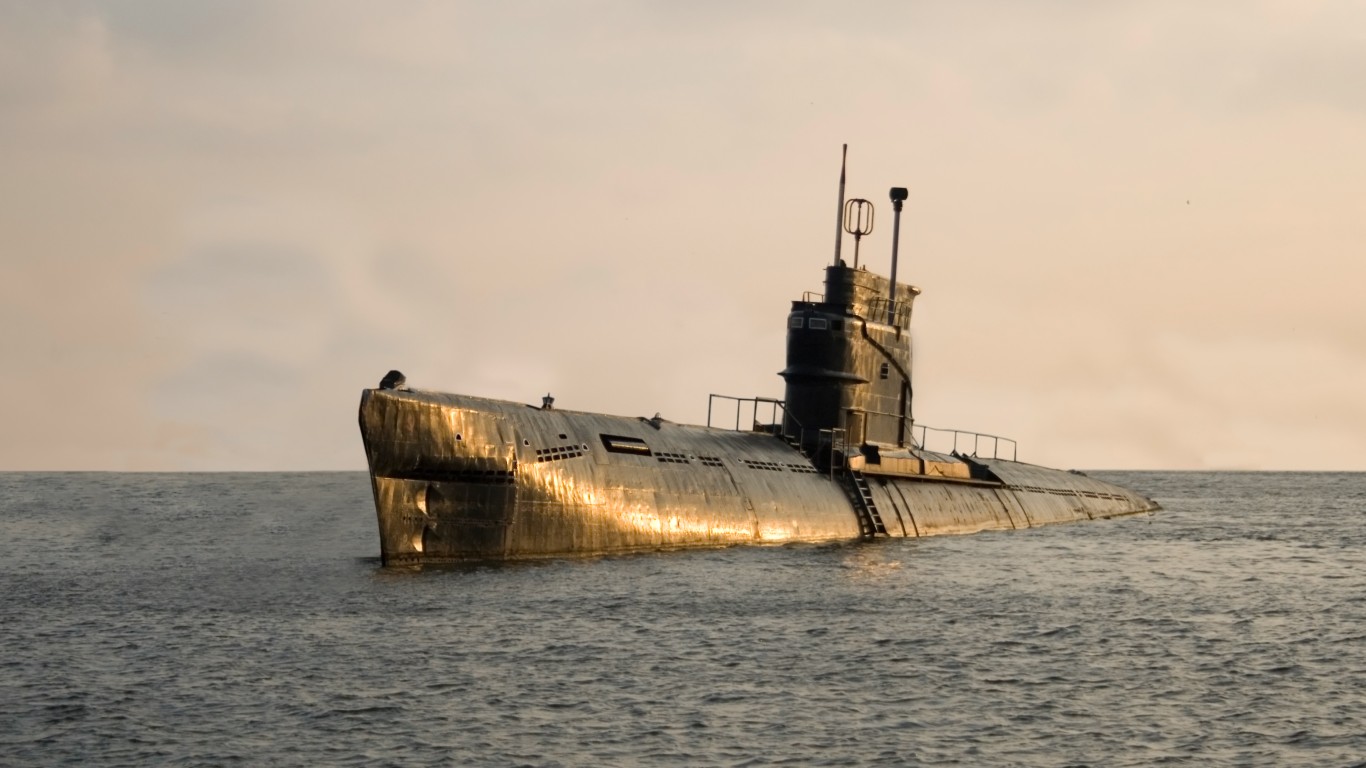
10. Cuban Missile Crisis
> When: 1962
A confrontation between a Soviet submarine and a U.S. Navy ship almost provoked nuclear war during the Cuban Missile Crisis. On Oct. 27, 1962, the American destroyer USS Beale, on patrol off the coast of Cuba as part of the U.S. blockade of that country, dropped non-lethal explosives on the Soviet submarine B-59, which was operating near the blockade line. The depth charges were dropped to force the submarine to the surface. However, the submarine’s captain thought the depth charges were live and ordered his men to prepare for an attack.
Soviet protocols required all three of the submarine’s senior officers to give the go-ahead to attack. The sub’s second in command opposed launching an attack and persuaded the other officers to bring the submarine to the surface.
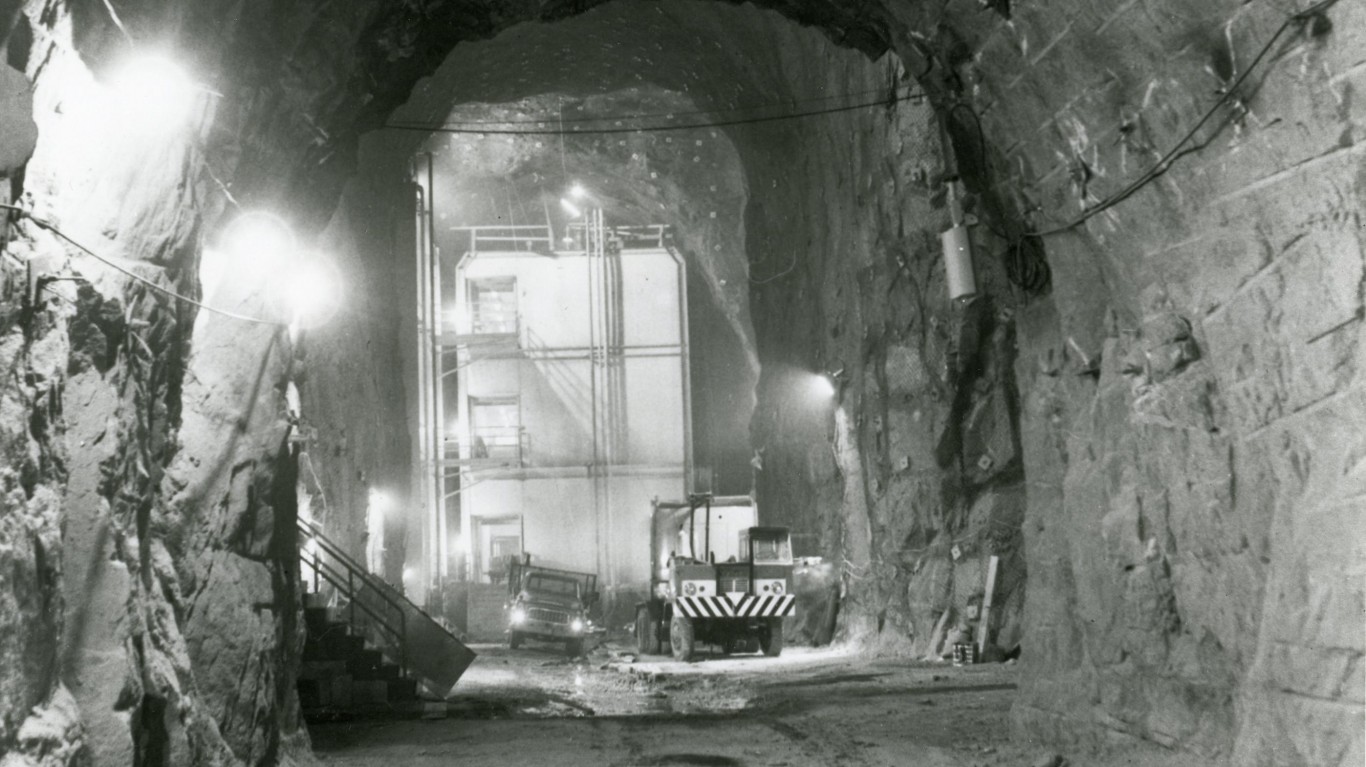
9. Too-real war game
> When: 1979
A simulated war game on a training program booted up by an Air Force officer almost turned into the real thing on Nov. 9, 1979. In the scenario, the Soviet Union had fired 1,000 nuclear missiles at America at the same time. Unbeknownst to the officer, the program was connected to the mainframe in The North American Aerospace Defense Command control room. When the simulation began, computers from NORAD reported a nuclear attack. Warnings went out to military personnel that the country was under nuclear attack and to prepare to respond.
A cool-headed officer at NORAD wanted to find out how real the crisis was, calling radar stations to see if they had seen anything. They reported nothing hostile on the radar. Missile-detecting satellites also gave the all-clear signal.
[in-text-ad]

8. Three Mile Island accident
> When: 1979
A nuclear reactor partially melted down at the Three Mile Island facility in Pennsylvania on March 28, 1979. This event remains the most serious accident for an American commercial nuclear power plant. The incident was caused by a combination of human error, plant design flaws, and component failures.
The Three Mile Island accident permanently changed the nuclear industry in the United States, ushering stricter safety regulations and stronger oversight of the industry.

7. False nuclear war alarm
> When: 1980
At about 2:30 a.m. on June 3, 1980, an Air Force staffer at the North American Aerospace Defense Command noticed that a screen that usually read “0 Incoming Missiles” suddenly read “2 Incoming Missiles.” Then the screen said “220 Incoming Missiles.” Eventually, the number rose to 2,200. President Jimmy Carter’s national security adviser Zbigniew Brzezinski was contacted about the crisis and he asked for confirmation from his his military aide, General William Odom. He called back and said it was a false alarm.
An investigation later determined that a defective computer chip in a communications device caused the warning. The chip reportedly cost 46 cents.

6. Soviet computer malfunction
> When: 1983
Were it not for Stanislav Petrov, you might not be reading this story. On Sept. 26, 1983, Petrov, at the time a lieutenant colonel in the Soviet Air Defense Forces, was on duty at a bunker outside Moscow, monitoring the Soviet Union’s early-warning system for nuclear attack. Just after midnight, an alarm went off indicating one of the nation’s satellites had detected that the United States had launched five ballistic missiles at the Soviet Union. Petrov had a hunch the alarm was false because it only indicated five missiles were launched; if the U.S. was going to strike, he reasoned, it would use much greater force. Also, Soviet radars did not show an incoming attack. The Soviet Union did not launch, and the world was spared.
[in-text-ad-2]

5. War games alert
> When: 1983
The year 1983 was fraught with Cold War tension, and a simulated war game almost led to one of the closest calls to nuclear war since the Cuban Missile Crisis. The war game exercise, called Operation Able Archer, involved 40,000 NATO troops and envisioned a scenario in which conventional war escalated into a nuclear conflict. The exercise proved so realistic that the Soviet Union was almost provoked into launching a nuclear strike.
United Kingdom Prime Minister Margaret Thatcher was so alarmed by the Russians’ reaction that she asked the United States to make sure that mistake was not repeated.

4. Chernobyl disaster
> When: 1986
The accident at the Chernobyl nuclear power plant in Ukraine in 1986 is still the deadliest nuclear accident of all time. The incident occurred when a surge of power during a test of the reactor systems destroyed one of the units of the nuclear power station. The accident and the ensuing fire released large amounts of radioactive material into the environment. The radiation was detected over much of Europe.
The Soviet Union tried to downplay the seriousness of the event. Were it not for the courage of those who responded to the accident, many of whom died trying to contain the radioactive material, thousands more people would have died. The Chernobyl disaster turned the towns of Pripyat and Chernobyl into ghost towns. Officials of the Soviet Union eventually closed off an 18-mile ring around around the plant.
[in-text-ad]
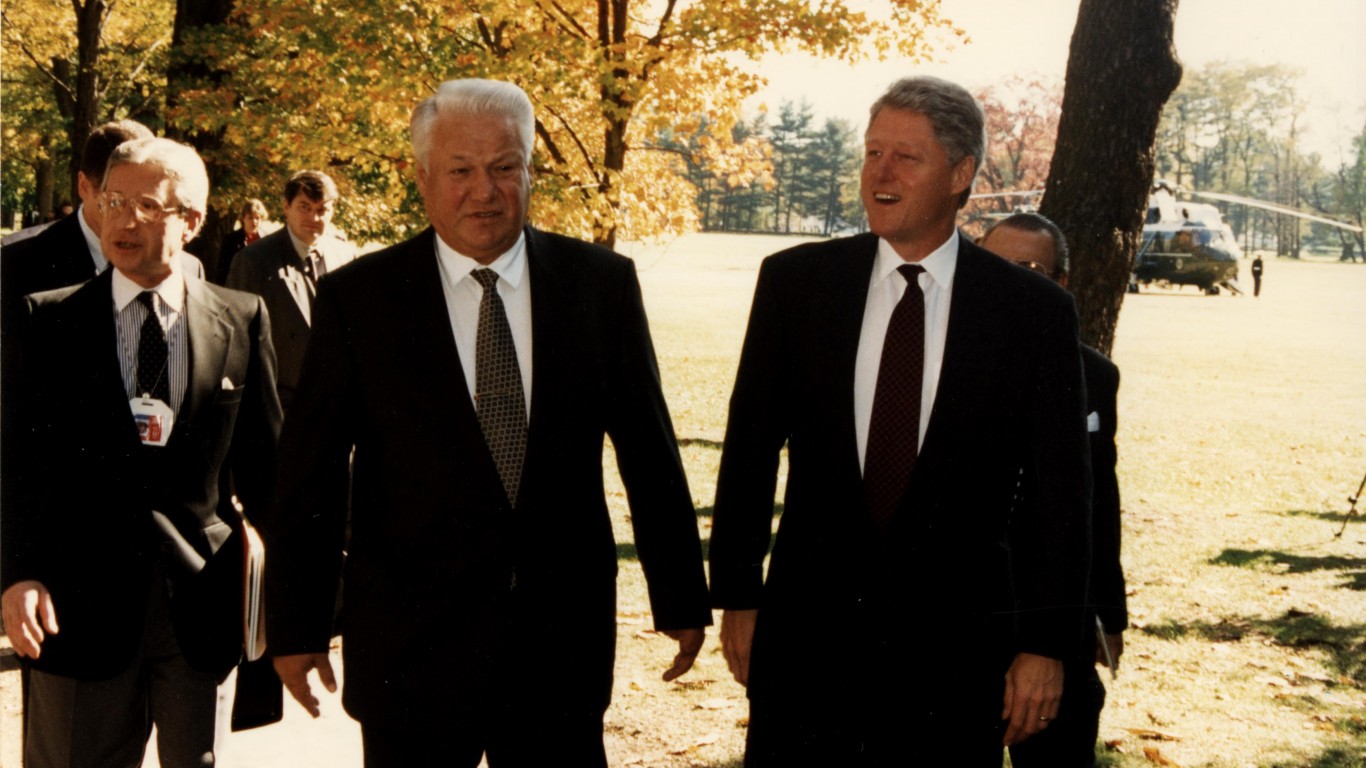
3. Norwegian rocket incident
> When: 1995
Even though the Cold War had ended by 1995, the United States and Russia still had plenty of nuclear weapons. And an incident on Jan. 25, 1995, was a frightening reminder of that adversarial relationship. On that day, Russian radar detected a fast-moving object above the Barents Sea on Russia’s northern border, an object that separated into sections like a Trident missile would. In Moscow, a signal was sent to the briefcases that contain the nuclear codes that accompany President Boris Yeltsin. Russia had to decide within 10 minutes whether to respond. Eight minutes after the first alarm, the incoming objects fell into the ocean and the decision to attack was averted.
It was later learned that object was launched from Norway and was a scientific rocket. The Russian government had been notified weeks before, but apparently the message had not reached the radar station.
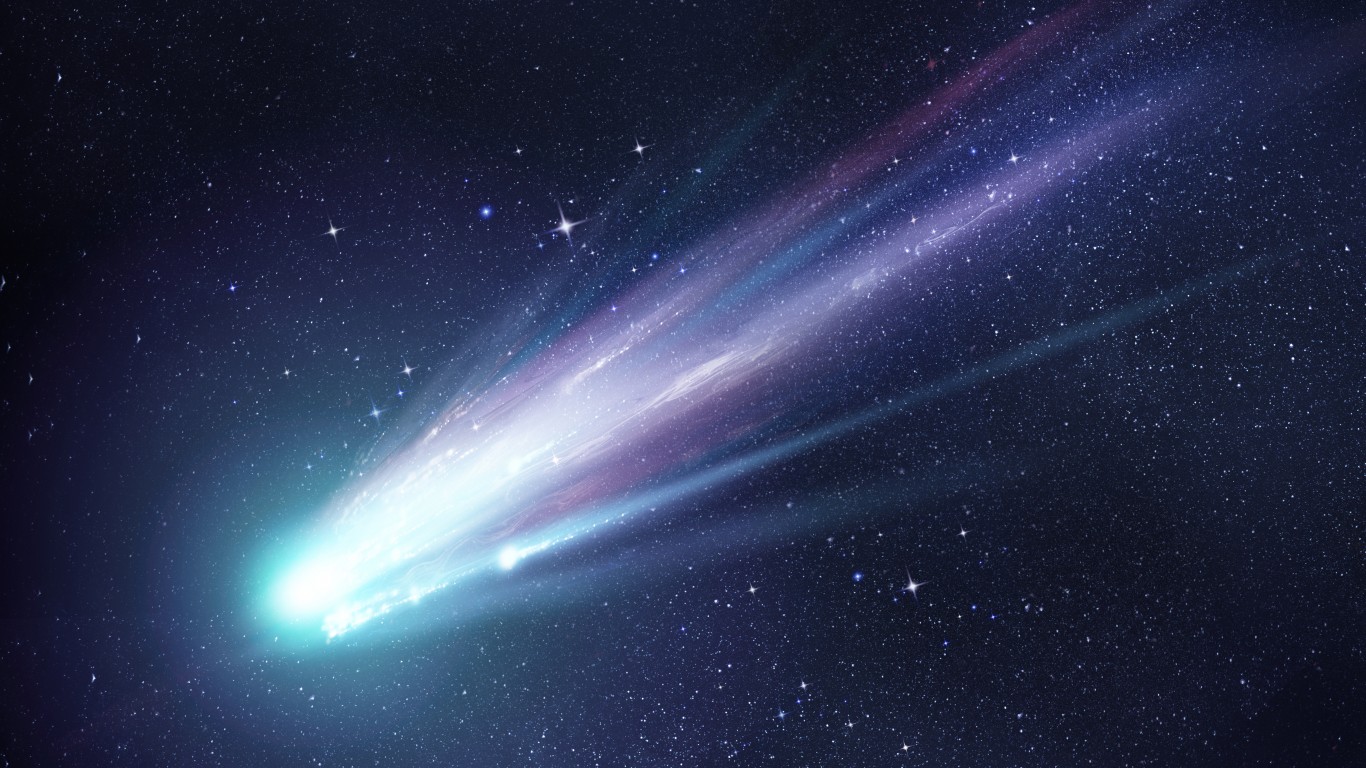
2. Comet Hyakutake
> When: 1996
The Great Comet of 1996 was massive in size. Discovered by amateur astronomer Yuji Hyakutake just two months earlier in January 1996, it was the closest approach to Earth of any comet in 200 years. At its nearest approach in March 1996, the comet was 9.3 million miles away, the distance between Earth and the planet Neptune. It had been the brightest comet in 20 years. The comet’s tail stretched 311 million miles, one of the longest ever seen.

1. Solar flare
> When: 2012
A latter-day Carrington Event, a massive solar flare, occurred in July 2012. But unlike the Carrington episode of 1859, Earth was not in the line of fire. However, the event was close enough to have struck the Stereo-A spacecraft and touched the portion of Earth’s orbit where the planet had been a week prior.
The average American spends $17,274 on debit cards a year, and it’s a HUGE mistake. First, debit cards don’t have the same fraud protections as credit cards. Once your money is gone, it’s gone. But more importantly you can actually get something back from this spending every time you swipe.
Issuers are handing out wild bonuses right now. With some you can earn up to 5% back on every purchase. That’s like getting a 5% discount on everything you buy!
Our top pick is kind of hard to imagine. Not only does it pay up to 5% back, it also includes a $200 cash back reward in the first six months, a 0% intro APR, and…. $0 annual fee. It’s quite literally free money for any one that uses a card regularly. Click here to learn more!
Flywheel Publishing has partnered with CardRatings to provide coverage of credit card products. Flywheel Publishing and CardRatings may receive a commission from card issuers.
Thank you for reading! Have some feedback for us?
Contact the 24/7 Wall St. editorial team.